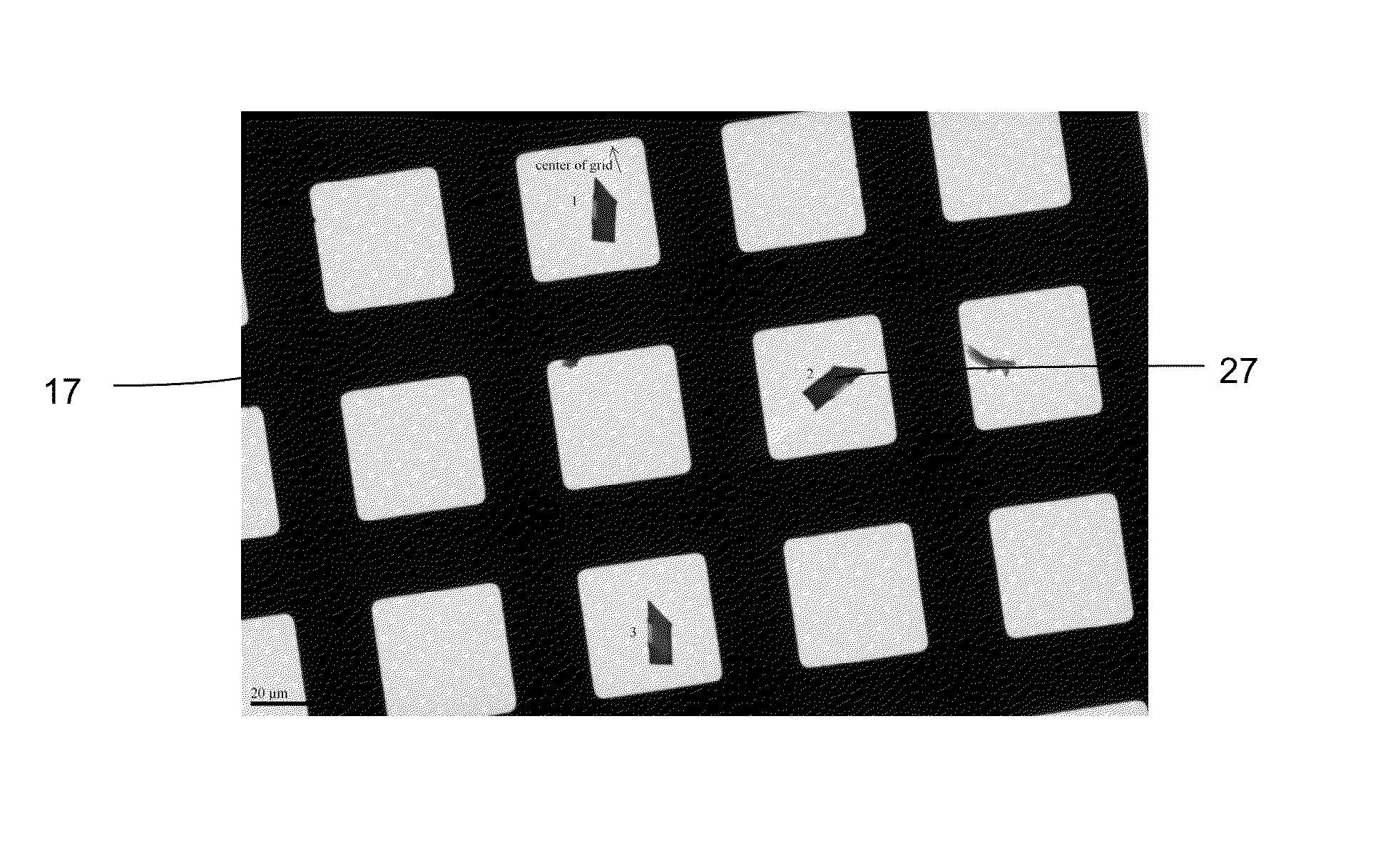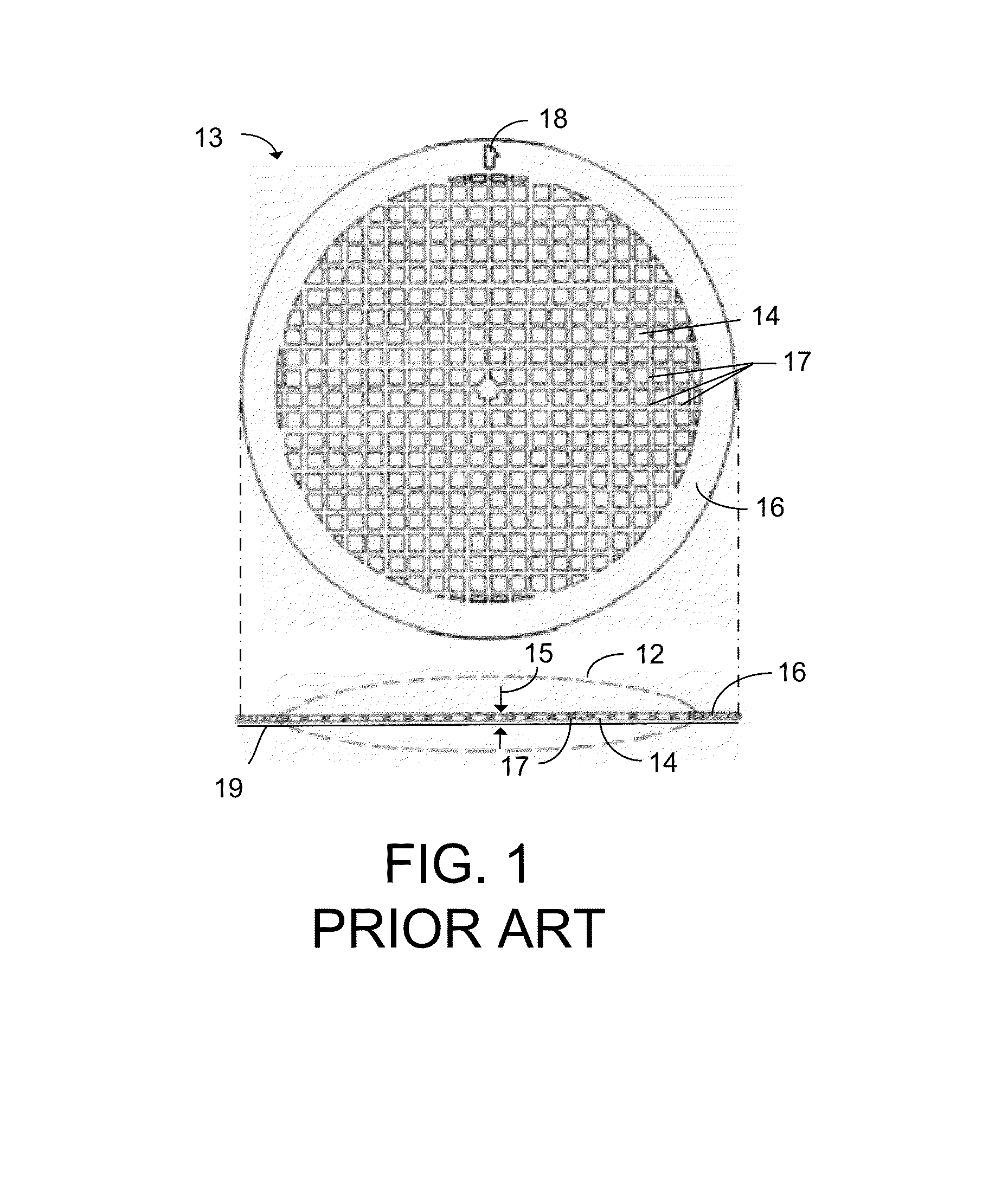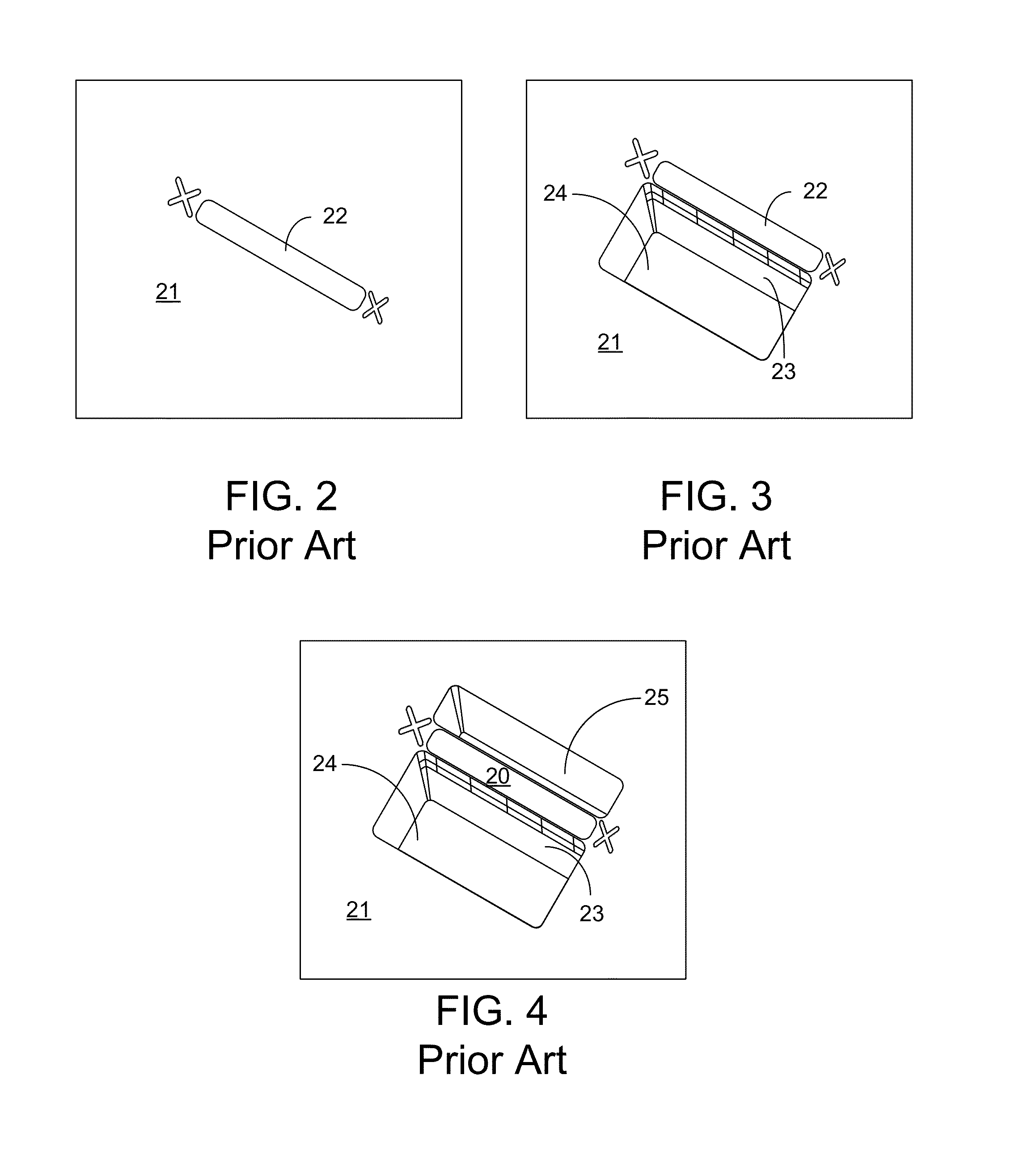System and Method for Ex Situ Analysis of a Substrate
a substrate and ex situ analysis technology, applied in liquid/fluent solid measurement, instruments, machines/engines, etc., can solve the problems of inability to accurately detect the structure of the substrate, the thinning of the substrate below 30 nm is difficult, and the measurement is too small for the resolution provided by an ordinary sem, etc., to achieve a high degree of confidence in the orientation of the substrate, the effect of easy identification of the orientation and fast processing of the lamella
- Summary
- Abstract
- Description
- Claims
- Application Information
AI Technical Summary
Benefits of technology
Problems solved by technology
Method used
Image
Examples
Embodiment Construction
[0043]Preferred embodiments of the present invention provide for improved methods for lamella creation from wafers and use of the lamella in ex-situ processes. More specifically, preferred embodiments make lamellas in asymmetric shapes before they are extracted and placed on specified carbon grids containing a carbon film with sizeable holes. S / TEM samples produced according to the present invention will allow S / TEM imaging and chemical analysis with a high degree of confidence in sample orientation. Such orientation and methods of using ex-situ processes allow for proper placement of the sample on precise locations of the carbon grid such that the region of interest lies over one of the many sizable holes in the carbon film, which results in little to no optical and spectral interference from the carbon. Overall, the lower potential for error from knowing the orientation of the sample in combination with the faster processing of the samples in ex-situ processes and less interferenc...
PUM
| Property | Measurement | Unit |
|---|---|---|
| length | aaaaa | aaaaa |
| thickness | aaaaa | aaaaa |
| width | aaaaa | aaaaa |
Abstract
Description
Claims
Application Information
 Login to View More
Login to View More - R&D
- Intellectual Property
- Life Sciences
- Materials
- Tech Scout
- Unparalleled Data Quality
- Higher Quality Content
- 60% Fewer Hallucinations
Browse by: Latest US Patents, China's latest patents, Technical Efficacy Thesaurus, Application Domain, Technology Topic, Popular Technical Reports.
© 2025 PatSnap. All rights reserved.Legal|Privacy policy|Modern Slavery Act Transparency Statement|Sitemap|About US| Contact US: help@patsnap.com



